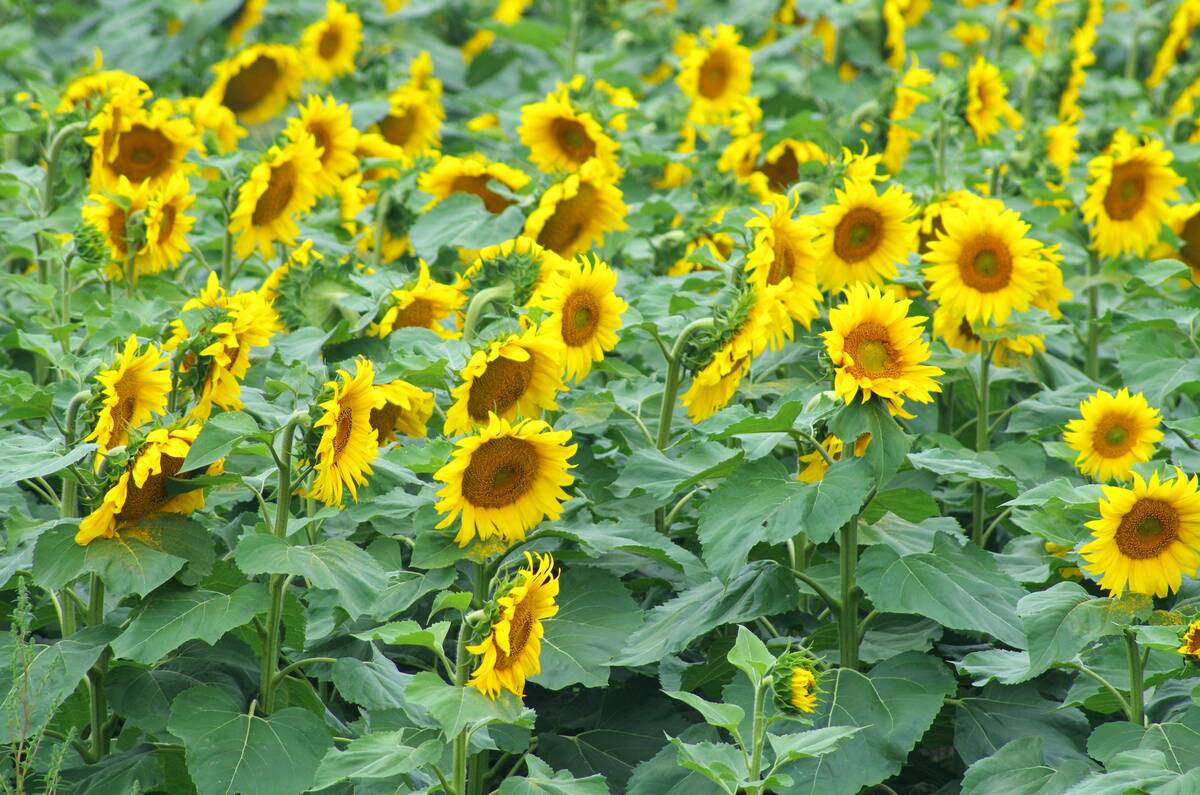Not since the 1800s has a cattle production cycle lasted this long.
For the past five years the number of cows in North America has
continued to decline. The last low point in the cycle was 14 years ago.
The extraordinary nature of the cycle is making it impossible to
predict when producers might start to increase cow numbers, said Dillon
Feuz, a livestock marketing specialist at the University of Nebraska’s
Panhandle Research and Extension Center.
“The drought is compounding several factors that are keeping producers
Read Also

Bird repellent gets emergency approval for sunflowers
Bird repellent gets emergency approval for sunflowers
from growing their herds,” he said.
These have resulted in more beef from fewer cows, reducing the demand
for new mothers. The factors include carcass weights near record highs,
a climbing pregnancy rate, less disease or death among cows and calves,
and feeding efficiency that has improved profitability for producers.
A long slow decline in cow numbers has failed to trigger any sudden
shortages or price increases that might restart herd expansion.
Feuz said while these factors have staved off the start of a new cycle,
the drought may be the trigger to kick off the next one.
“Record droughts west of (western Nebraska) are resulting in heavy
culling and a sell-off of some herds … A lot of cattle have been
moved to Missouri and Arkansas where pastures are in good shape and …
in Nebraska and Kansas a lot of grain corn won’t be worth harvesting
and will become silage, so there is some feed around. But this isn’t
where the cows live,” he said.
“Cows live on grass in Montana, Wyoming, Nevada, Oklahoma and Texas.
That is where the drought is worst.”
The most severe U.S. drought in more than 100 years is causing a
sell-off of cow-calf pairs during the summer months. Lloyd Wilson owns
Imperial Livestock Auction in Imperial, Neb., near the Colorado and
Kansas borders in the southeastern part of the state.
In an average July or August, his market “might see 250 head of cull
cows or feeders” at a twice-monthly sale. On Aug. 2, after four weekly
sales in a row, his auction will have sold 2,500 animals. Many of the
cow-calf pairs will be split, with cows being sent to slaughter.
However, the better pairs will make their way to Texas or Missouri
where rains have been better.
“Around here and to the west … guys never turned their cattle out.
They’re just feeding them until the feed runs out and they have to
sell,” he said.
Feuz said the long-term effect of these herd dispersals should heighten
demand for replacement heifers and cows when the market turns around or
the drought lifts.
Garry May, a cattle industry economist at the University of Iowa, said
shuffling of cattle from the Great Plains states to the corn belt
farther east is obscuring the true picture of the cow population and
the drought’s impact on the cattle cycle.
“Most of what we have on this is anecdotal. The high number of
slaughter heifers and cows is definitely helping to keep downward
financial pressure on the beef market. That is, in turn, keeping
producers from expanding where they have feed and water to do so,” he
said.
May said the total North American cattle herd numbers are remaining
flat “on what we believe is the bottom of the curve.”
The University of Florida confirms that the total cow herd population
is constant. In an early June report that cited producer surveys from
April, 26 percent of American producers said they intended to increase
herd size if possible, while 15 percent said they planned to lower
stocking numbers.
May said the drought may have altered many producers’ plans in the
Great Plains, but said “hard data won’t be in hand” until the United
States Department of Agriculture survey results are published in mid
August.
“We know producers want to expand. But the market doesn’t justify it or
the weather won’t co-operate,” he said.
“Once we get through this next few months, something is bound to happen
with the market. There just won’t be enough cows to meet the demand of
the marketplace. If a farmer is in the position to keep heifers and
cows through the low prices and drought, there will be some pretty good
opportunities on the other side.”
May said biology will limit how fast the herd can be rebuilt so demand
may be there for a long time.
Wilson said producers in his area of Nebraska are only starting to
disperse their herds after a month of heavy culling down to the six and
seven-year-old cows.
“It almost doesn’t matter if it rains. Thirty more days and we’ll see
some really big dispersals. I can’t see how we can avoid it …. Some
of those guys will restock someday. Some will just stop producing
cattle,” said the auctioneer.
















